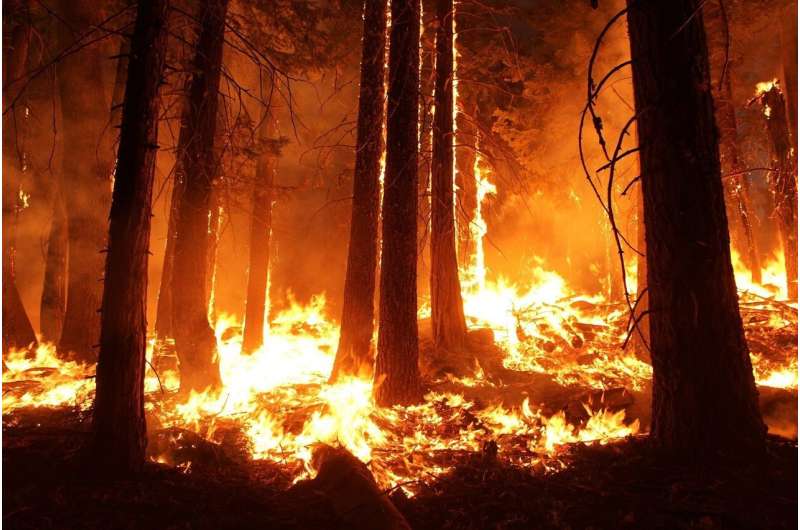Study finds soil erosion and wildfire another nail in coffin for Triassic era

Curtin research has revealed that soil erosion and wildfires contributed to a mass extinction event 201 million years ago that ended the Triassic era and paved the way for the rise of dinosaurs in the Jurassic period.
Lead author Curtin Ph.D. graduate Dr. Calum Peter Fox, from the WA-Organic and Isotope Geochemistry Center (WA-OIGC) in Curtin's School of Earth and Planetary Sciences, said the research identified the other factors that contributed to a combination of stresses that killed off Triassic life and allowed the ecological expansion of dinosaurs.
"This new study adds soil erosion and wildfire activity to the list of factors that drove this mass extinction to end the Triassic era, building on our previous research that found a rise in levels of acid and hydrogen sulfide in the ocean caused by rapid increases in carbon dioxide due to a surge in volcanic activity," Dr. Fox said.
"Similar to modern large-scale fire events that are driven by climate change, periods of wildfire activity have significant impacts for land-dwelling fauna and flora and drive environmental and ecosystem stress that can lead to mass extinctions."
Dr. Fox said the team investigated fire events 201 million years ago during the end-Triassic mass extinction event, which featured similar increases to carbon dioxide to those witnessed in the modern-day conditions due to greenhouse gas emissions.
"By studying polycyclic aromatic hydrocarbons, which can be formed during the incomplete combustion of organic matter, we found that soil erosion was a more prominent terrestrial ecological stress than intensive wildfire activity during the end-Triassic mass extinction event in the Bristol Channel of the south-west United Kingdom.
"This tells us land and marine ecosystem and environmental stresses occurred at the same time and were likely exacerbated by soil erosion, with fire activity likely to be more localized in other areas rather than widespread across Europe."
Co-author John Curtin Distinguished Professor Kliti Grice, also from WA-OIGC in Curtin's School of Earth and Planetary Sciences, said modern-day soil erosion was a major cause of land degradation as it removed fertilized soil and promoted the deoxygenation of water columns, much like the mass extinction events of the past.
"These processes certainly have implications in the modern day due to the introduction of pollutants and pesticides," Professor Grice said.
"Observing that soil erosion had major impacts in our history and in comparing and contrasting a global record of the past, we can anticipate the scale and duration of currently-occurring and future soil erosion events."
Further research will aim to determine the global extent of soil erosion to better understand terrestrial ecosystem stresses in the past and to see if this is a common feature across all mass extinction events.
More information: C.P. Fox et al, Flame out! End-Triassic mass extinction polycyclic aromatic hydrocarbons reflect more than just fire, Earth and Planetary Science Letters (2022).
Journal information: Earth and Planetary Science Letters
Provided by Curtin University





















